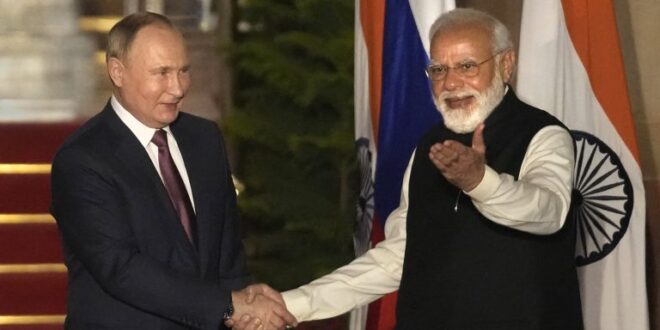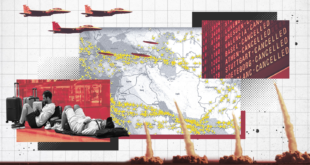India and Russia have historic ties and common interests that have led New Delhi to straddle a middle ground between Moscow and the West with respect to the Ukraine war.
Russia’s August battlefield setbacks in Ukraine have caused some Indian leaders to question whether Moscow remains a reliable and effective strategic partner.
India remains highly dependent on Russian arms imports and has noticeably increased its purchases of Russian energy exports in recent months..
Russia’s isolation and military setbacks could prompt India to move closer to the United States and U.S.-led groupings such as the Quad and I2U2.
Russia’s declining fortunes in its seven-month-long war against Ukraine pose an increasingly significant dilemma for India’s leaders and strategists who, to date, have sought to prioritize India’s national interests and downplay public criticism of Russia. India is bordered by historic adversaries Pakistan and China, both of which possess sizeable arsenals of nuclear weapons, as does India. India’s security challenges were compounded in August 2021 by the return to power of the Afghan Taliban – a regime that actively supported militant Islamist groups that have committed major acts of terrorism in India. Despite efforts to reduce its heavy reliance on Russian defense exports following the collapse of the Soviet Union, nearly 70 percent of India’s existing military stock is of Russian origin. India is an increasingly significant purchaser of Russian oil and coal, the importation of which has been restricted by the European Union and which Moscow is marketing to alternative buyers at a substantial discount. India also buys large quantities of other Russian goods, such as fertilizer and various agricultural products.
Both economically and politically, Indian leaders see picking sides as risky. For India, both the U.S. and Russia are potential partners in offsetting China’s influence. However, despite its non-aligned status, India has had historically warm relations with Russia. This long partnership undoubtedly accounts for the Indian government’s initial decision not to forcefully condemn Russia’s invasion of Ukraine. Particularly during the Soviet era, Soviet and Indian leaders agreed in their opposition to U.S.-led hegemony and Western colonialism and shared an affinity for socialist economic models. Some in the Indian government have expressed understanding of President Vladimir Putin’s position that the U.S.-led expansion of NATO posed a significant threat to Russia’s security and territorial integrity and necessitated his decision to invade Ukraine. In addition to New Delhi’s dependence on Russian weaponry, India also appreciates Russia’s longstanding support on such major issues as India’s claims to the disputed territories of Jammu and Kashmir, and Moscow’s backing during periods of border tensions with both Pakistan and China.
As the war in Ukraine entered its sixth month, India’s balancing act became increasingly difficult. Evidence of Russian war crimes in Ukraine has mounted, and the battlefield setbacks suffered by Moscow in August have reduced the political and policy risks of denouncing the invasion or criticizing President Putin. At a bilateral meeting on the margins of the September 16 summit of the Shanghai Cooperation Organization (SCO) in Uzbekistan, India’s Prime Minister Narendra Modi criticized the war directly, telling President Putin, “I know that today’s era is not an era of war, and I have spoken to you on the phone about this.” Reflecting his apparently weakened image on the world stage, President Putin did not threaten to downgrade relations with India but instead promised to try to end the Ukraine war “as soon as possible” and blamed Ukrainian leaders for refusing to resume peace negotiations. That same day, India voted in favor of allowing Ukrainian President Volodymyr Zelensky to virtually participate in the United Nations General Debate via a pre-recorded address, a move which Russia vehemently opposed.
Beyond international diplomacy, some Indian strategists appear to be concerned that the poor performance of Russian weaponry in Ukraine implies that India’s Russian-made arsenal no longer satisfies India’s defense requirements. Additionally, Russia’s own stockpile of arms has been drawn down by the fighting in Ukraine, and Russia will need to replenish its own supplies before it can fill new orders from international buyers, like India. Western sanctions also constrain supplies of semiconductor products that Russia needs to manufacture many of its weapon systems, further limiting Russia’s capacity to deliver on arms orders from abroad. The concerns within the Indian defense establishment have led the U.S. and other Western arms suppliers to offer various systems to New Delhi. India has, in recent years, increased its weapons orders from the United States, France, and Israel, but such a complex transition will take time. Comments by Indian military officials indicate that, in the short term, the government is looking primarily to expand its capabilities to manufacture needed systems and subcomponents domestically. Indian leaders have given no indication that they intend to reduce their purchases of discounted Russian energy exports or enforce most Western trade sanctions against Russia.
India’s shift to a more critical stance on Russia’s invasion of Ukraine increases the potential for Indian leaders to integrate more extensively into U.S.-led international institutions and regional groupings. Indian military officials are likely attracted to those U.S.-made weapons that Ukraine has used to devastating effect on the battlefield, including the HIMARS (High Mobility Artillery Rocket System). Despite its historic aversion to joining U.S.-led “blocs,” India joined the Western-led “Quad” (Quadrilateral Security Dialogue: United States, Japan, Australia, and India) grouping formed in 2007 to balance out the growing strategic influence of China in the Indo-Pacific region, although the grouping was largely dormant for several years prior to 2017. India has nonetheless sought to remain engaged economically and politically with Beijing. Fellow Quad members might hope that India will henceforth align more closely with them to counter China, as well as Russia. India also has joined a multilateral group comprising the United States, Israel, and the United Arab Emirates (UAE) – “I2U2” – formed in October 2021, which issued its first joint statement in July 2022. The grouping has, at least initially, limited its discussions to functional issues such as economic development, technology-related trade, and climate change, but the I2U2 forum might increasingly serve to align its diverse members on issues such as Iran’s growing strategic threat, the Israel-Palestinian dispute, the return to power of the Taliban in Afghanistan, and related regional issues. Although India might move closer to the United States and U.S.-led groupings, New Delhi’s continued dependence on Russia suggests that any Indian realignment will be gradual, measured, and probably slower than U.S. and Western officials might want.
 Eurasia Press & News
Eurasia Press & News



